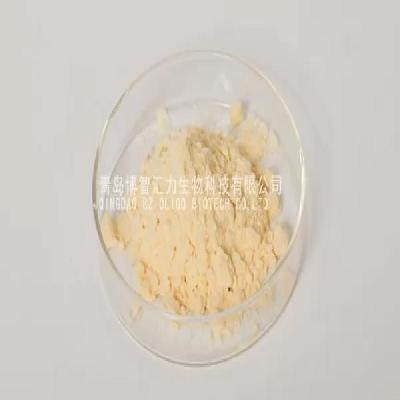-
Categories
-
Pharmaceutical Intermediates
-
Active Pharmaceutical Ingredients
-
Food Additives
- Industrial Coatings
- Agrochemicals
- Dyes and Pigments
- Surfactant
- Flavors and Fragrances
- Chemical Reagents
- Catalyst and Auxiliary
- Natural Products
- Inorganic Chemistry
-
Organic Chemistry
-
Biochemical Engineering
- Analytical Chemistry
-
Cosmetic Ingredient
- Water Treatment Chemical
-
Pharmaceutical Intermediates
Promotion
ECHEMI Mall
Wholesale
Weekly Price
Exhibition
News
-
Trade Service
On June 30, 2016, NEC announced the discovery of a carbon material
called a "carbon nanobrush" for the first time in the world.
The new material can improve the performance of batteries and sensors, and also impart conductivity
to plastics and rubber.
Carbon nanobrushes are made by fibrous polymerization of carbon nanohorns (CNH
).
The diameter is about 100nm, and the length is about 1~10μm
.
In the past, the carbon material used for CNH was a CNH spherical polymer (spherical CNH).
Both carbon nanobrushes and spherical CNH have the characteristics of strong dispersion and difficult agglutination, and the difference between the two lies in electrical conductivity
.
The conductivity of carbon nanobrushes is more than
10 times that of spherical CNH.
The reason for this is that the distance between the spherical CNH dispersed in the base metal is relatively long, while the electrons of the carbon nanobrush pass through the connected fiber structure, and the current flows easily
.
When the carbon nanobrush is used as a conductive material for the battery electrode, the charging and discharging speed can be increased by 10~15%.
In addition, the specific surface area of CNH is large, so it can maintain a strong
"adsorption" of other substances on the surface.
This property makes it a high-performance adsorbent
.
Carbon nanobrushes are made by irradiating a laser
with a carbon rod target containing an iron catalyst.
Although the production method is almost the same as that of spherical CNH, spherical CNH uses a carbon rod target that does not contain iron
.
As long as the target material is changed, it can be manufactured in large quantities (1kg/day)
on the same scale as spherical CNH.
In the future, NEC will work with material manufacturers and research institutes to verify materials and develop mass production
.
Samples
are scheduled to be provided in FY2017.
On June 30, 2016, NEC announced the discovery of a carbon material
called a "carbon nanobrush" for the first time in the world.
The new material can improve the performance of batteries and sensors, and also impart conductivity
to plastics and rubber.
Carbon nanobrushes are made by fibrous polymerization of carbon nanohorns (CNH
).
The diameter is about 100nm, and the length is about 1~10μm
.
In the past, the carbon material used for CNH was a CNH spherical polymer (spherical CNH).
Both carbon nanobrushes and spherical CNH have the characteristics of strong dispersion and difficult agglutination, and the difference between the two lies in electrical conductivity
.
The conductivity of carbon nanobrushes is more than
10 times that of spherical CNH.
The reason for this is that the distance between the spherical CNH dispersed in the base metal is relatively long, while the electrons of the carbon nanobrush pass through the connected fiber structure, and the current flows easily
.
When the carbon nanobrush is used as a conductive material for the battery electrode, the charging and discharging speed can be increased by 10~15%.
In addition, the specific surface area of CNH is large, so it can maintain a strong
"adsorption" of other substances on the surface.
This property makes it a high-performance adsorbent
.
Carbon nanobrushes are made by irradiating a laser
with a carbon rod target containing an iron catalyst.
Although the production method is almost the same as that of spherical CNH, spherical CNH uses a carbon rod target that does not contain iron
.
As long as the target material is changed, it can be manufactured in large quantities (1kg/day)
on the same scale as spherical CNH.
In the future, NEC will work with material manufacturers and research institutes to verify materials and develop mass production
.
Samples
are scheduled to be provided in FY2017.







